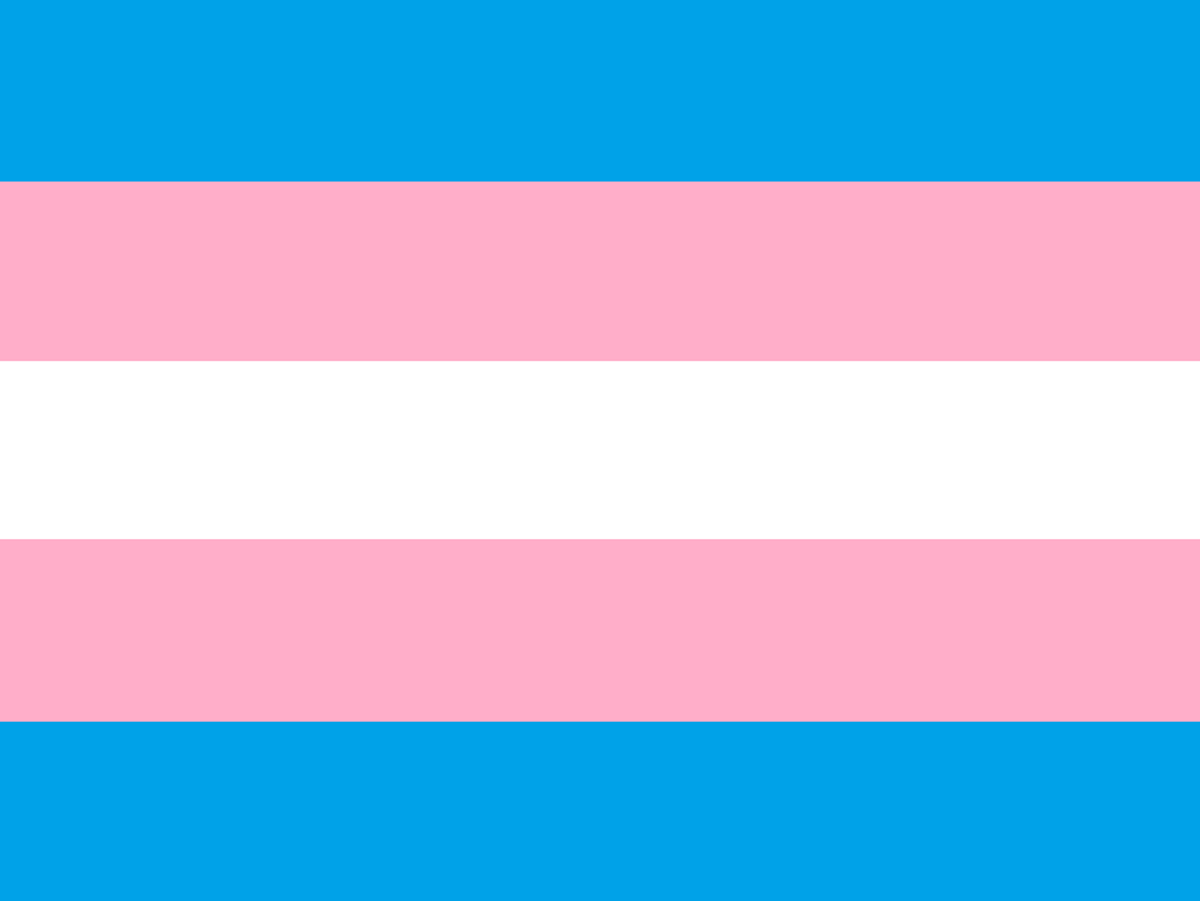Before I begin I'd like to say that I had a good time researching this topic and writing about it, it was really interesting and an eyeopener as well. I feel that this topic is understudied and that by posting it here, I can raise awareness for eating disorders both here and in the Middle East. I also believe that in the age of "post-truth" and mass bigotry directed at my culture and religion, the best way to combat this is with a thought out and researched response coupled with primary literature and reliable sources. I hope you enjoy reading my deductive analysis and finish just as enlightened as I was after writing it!
Eating Disorders, Advertisements and the Middle East Compared to the West
Ethnocentrism is understood, at least amongst cultural anthropologists, as the unconscious use of one’s own culture as the standard for all other cultures. That is, ethnocentrism manifests itself in the form of believing one’s own culture is the goal; and that all other cultures are either at or in the process of meeting that goal. This unconscious effort may also thrive off the unconscious belief that one’s own culture is perfect. That, as the perfect culture, it is free of any issues or problems that may occur within their culture. I say unconscious because one may not necessarily be truly conscious of these problems. The distinction being that one who is not truly conscious may agree that there are issues within their culture but will stop at that. They may cognitively, perhaps even vocally, refuse to concede the fact that their culture is not perfect. For perfection has no errors, margins, or blunders; and this is an objective definition. That is, being truly conscious is to be both consciously and subconsciously aware of the faults within one’s own cultural practices. With this true consciousness of imperfection leaves ethnocentrism, but what may come in its place is no better.
In the late seventeenth century, an English playwright by the name of John Dryden first popularized the term “noble savage” in a play of his. This term, “noble savage,” is used by cultural anthropologists to describe the phenomena of holding one’s own culture to a standard set by other cultures. Basically the opposite of ethnocentrism, but not quite. Although both are obviously opposites of each other, they share some fundamental aspects; one of which being the fact that they ignore the context surrounding the “outside” culture. For the sake of terminology, I will be referring to the phenomena of the “noble savage” as, “xenocentrism.” Both xenocentrism and ethnocentrism attempt to analyze foreign cultural practices without their relevant context; instead they analyze them within the context belonging to their (the analyzer’s) cultural context. In the case of xenocentrics, this is like bringing a non-native animal to a foreign habitat; there can be, and often are, consequences. To add, these consequences are often unforeseen and only add to the importance of analyzing cultural practices within their relevant context. Of course, this gives the impression that one can only learn about another culture and never learn from another culture.
All cultures have faults, but they also contain strengths; and these strengths and weaknesses differ for each culture or cultural region. Some cultures may rise where others may fall, and there is nothing wrong, ethnocentric, or xenocentric about acknowledging this. Similarly, the “others” may rise where the “some” may fall; and there is nothing wrong about this either. This should also not stop others from finding solutions to their problems. Solutions can be posed by examining other cultures and learning about them. The first step towards fixing a problem is acknowledging its presence, and the next is by acknowledging the context of the culture one plans on using as a reference guide for their solution.
This paper examines the relationship between culture and advertisement as it relates to the impact on eating disorders among female adolescents. This paper argues that culture manifested in advertising has an influence on eating behaviors among female teenagers. By looking the Middle East and the West, we shed light on the difference between eating disorder rates driven by advertising into different cultures. It can be deductively argued that cultural plays a critical role in the emergence of eating disorders through advertisement. The paper starts with an overview of culture and advertising followed by an analysis on the impact of advertising on eating disorders amongst adolescents. The next section discusses the relationship between culture and advertising in both regions. In light of the findings, the paper ends with recommendations to move forward.
Before we attempt to understand the relevance and impact culture has on both the advertisements and people, it is important to first understand culture and advertisements in their own terms. Culture is understood as a, and possibly the greatest, human adaptation; it is the result of the natural drive all humans possess to survive in their given environment. Culture is defined as the set of learned practices, beliefs, and ideas that belong to and are acquired by a group of people. It is with these ideas that humans try to better understand and survive in their given region. Cultures are vast and varied; no two cultures are exactly alike however, cultures belonging to a specific region may hold similarities with each other. That being said, it is also understood that as per their differences, cultures have specific solutions and approaches to general issues and problems. That is, different cultures have different ways of solving problems that plague all humans.
It is no surprise that different regions have different cultures, and that these different cultures give rise to specific preferences among those who share a specific culture. In America, it is very unlikely that we will be seeing a Macy’s ad advertising clean-cut tailored suits and shoes for men at a discount for the annual Gerewol. This is because the Gerewol is a week long tradition held by the Wodaabe people in which men compete with each other, displaying their beauty and skills, a human lek if you will, for women to judge for marriage. Perhaps in area and regions belonging to Niger, Chad, and Cameroon, an advertisement of that nature may appear; but highly unlikely in America. It is in a company’s interest to produce appealing and attention grabbing advertisements in order to boost their sales and corporate success. So knowing exactly what people want and like is their main prerogative; and the best way to identify and understand these things is to understand the culture relevant to the region they wish to do business in. This is precisely why companies push and invest in their marketers to learn more about the culture belonging to their potential consumers. It also why different regions of the world have different advertisements for the same products we have here. Of course, aside from impacting sales by raising awareness for new and upcoming products on the market, upcoming holiday shopping sales, and special discounts, advertisements can even impact the people; and not positively.
It is fairly recent that Americans, namely women, are combatting the unfair, unhealthy, and unattainable beauty standards the media, especially advertisements, pushes. We have seen an increase in protests and campaigning against the fascist beauty standards put forth by advertisements; and for good reason. Advertisements influence more than just consumers’ want for new, precious products and delectable foods and drinks; they influence how consumers see themselves. Media messages related to body image, weight, and beauty have an impact on the welfare of consumers particularly when it relates to eating disturbances (National Eating Disorder Association, n.d.). In fact, advertising themes with respect to ideal self-image are correlated to eating disorders (Peterson & Jun, 2004). That is, advertisements that portray “ideally” thin and “beautiful” women in their advertisements are related with eating disorders. I say women, because the topic of eating disorders caused by the “thin ideal” almost exclusively affect women. One study finds that the impact of advertising on eating disorders among female adolescents is expected to increase with media exposure (Harrison & Hefner, 2009). This strong evidence suggests that advertisements are powerful tools which can and do cause increases in eating disorders among young women. To add, these eating disorders are the result of the unattainable beauty and weight standards that are pushed by advertisers in their advertisements. The fact that eating disorders are on the rise for young women is no laughing matter either. The current state of our advertisements are not leaving a positive impact on young women, rather it is doing them great harm by portraying harmful images related to their bodies. Of course, this is with respect to American and Western regions of the world. As stated before, different regions have different advertisements tailored to fit the cultural preferences of that region.
As stated above, culture does have an influence on advertisements, how it has an influence is the question. Before trying to understand the cultural relevance of the Middle East in Middle Eastern advertising, one should understand very bare basics of Middle Eastern culture. Middle Eastern cultures are largely influenced by Islamic culture. I say Islamic culture, because the holy text sacred to the religion of Islam, the Quran, has guidelines for daily life. Conservative dress wear, especially for the women, is a cultural norm in the Middle East due in fact to Islamic teachings that practitioners, especially women, are required to cover their figure. This is one of the most well-known aspects of Islam that is embedded into Middle Eastern culture; and this well-known aspect is present in Middle Eastern specific advertisements. One study found that Advertisers in the Middle East depict women in more conservative dress wear than their U.S counterpart (Kalliny & Ghanem, 2009). So it is true, that this cultural practice does manifest itself into Middle Eastern advertisements. There is a difference in how women are dressed in advertisements in the Middle East versus the U.S. This difference gives insight into the cultures of each regions as well; one can argue that in Middle Eastern culture, there is less emphasis on the female figure than there is in U.S culture. Perhaps even western culture in general. One can also relate this argument with the fact that young women in the U.S and west are being negatively impacted by their advertisements. That is, the strong emphasis on young women’s bodies in U.S and western advertising is partly to blame for their eating disorder dilemma. These differences of course do mean that there are differences in the eating disorder rates among young women for these regions. Which is not surprising considering advertisements do have a strong influence on young women’s eating behaviors.
It should be noted that although these regions still have their major contrasts, they are slowly homogenizing. Globalization has allowed for a mass cultural diffusion, either through scholars and travelers coming back to their native lands with information and news of different cultures and peoples or via diffusion and immigration. The bulwark of language has been breached by translators and linguists, the barrier of the seas broken by larger and faster ships to carry more goods and with them, people and ideas. The skies, although a relatively new frontier, have come under the mastery of humans; airplanes transport swathes of people across very large distances faster than ships and automobiles. That being said, western culture is becoming more prevalent in non-western regions of the Earth. To put it aptly, westernization is occurring in greater frequency; and this increase in westernization, although mostly harmless, is taking its toll on Middle Eastern young women.
To begin, it is no surprise that the thin body is idealized everywhere in North America (Harrison & Hefner, 2009). This idealization makes its way into the U.S advertisements, as discussed above. In the Middle East, westernization is bringing U.S style advertisements and their consequences. One study finds that, although lower, eating disorder rates are growing in the Middle East, it is suggested that this is due to Western exposure (Makino, Tsuboi, & Dennerstein, 2004). This ties back to the theme of advertisements in the U.S negatively impacting the eating behavior of young women. This is also further evidence of the fact that advertisements do have a strong influence on the eating behavior of young women. It is interesting to note that the fact that Middle East is rising in its eating disorder rates due to westernization is telling of the impact, or lack thereof, that Middle Eastern advertisements have on the population of young Middle Eastern women. Another study found that these advertisements negatively impact the eating behavior of women in Western and Middle Eastern regions (Witcomb, Arcelus, & Chen, 2013). One can argue that the reason the Middle East has lower eating disorder rates is due to the fact that their culture puts less emphasis on women’s bodies than U.S or Western culture; and that this difference in culture manifesting itself in their advertisements in the reason for their difference in eating disorder rates. In this case what affects the goose affects the gander, so perhaps what is good for the gander may also be good for the goose. With this knowledge in mind, a solution can be formulated; modifying the culture by putting less emphasis on women’s bodies. Culture influences advertisements, so by changing the culture we may be able to change the advertising in the U.S as well as the west for the better.
In conclusion advertisements hold more power in that they can and do influence the eating behavior of young women in both Western and non-Western settings. These advertisements are influenced by the culture present in the region and have notable contrasts between them thanks to the differences in these cultures. The U.S and Western cultures emphasize ideal bodies whereas Middle Eastern culture tends to deemphasize bodies in general. So by shifting or modifying the culture’s stance on the level of emphasis on women’s bodies to one like the Middle East, it is safe to say that one can expect a stagnation, or even a reversal, of the rates of eating disorders in the U.S and West.
Literature cited
Harrison, K., & Hefner, V. (2009). Media, Body Image, and Eating Disorders. In S. L. Calvert, B. J. Wilson (Eds.), The Handbook of Children, Media, and Development (pp. 381-406). doi:10.1002/9781444302752.ch17
Kalliny, M., & Ghanem, S. (2009). The role of the advertising agency in the cultural message content of advertisements: A comparison of the Middle East and the United States. Journal of Global Marketing. 22, 313-328. doi:10.1080/08911760903022549
Makino, M., Tsuboi, K., Dennerstein, L. (2004). Prevalence of eating disorders: A comparison of western and non-western countries. Medscape General Medicine, 6, 49. https://www.ncbi.nlm.nih.gov/pmc/articles/PMC14356...
National Eating Disorder Association. Media watchdog. n.d. https://www.nationaleatingdisorders.org/get-involv...
Peterson, N., Jun, M. (2004). Eating disorders and advertising effects: An exploration. Academy of marketing studies journal, 8, 31-48. http://go.galegroup.com.proxy.lib.wayne.edu/ps/i.do?p=ITOF&u=lom_waynesu&id=GALE%7CA166751765&v=2.1=r&sid=summon&authCount=1&selfRedirect=true#
Witcomb, G. L., Arcelus, J., Chen, J. (2013). Can cognitive dissonance methods developed in the West for combatting the 'thin ideal' help slow the rapidly increasing prevalence of eating disorders in non-western cultures?. Shanghai archives of psychiatry, 25, 332-341. doi: 10.3969/j.issn.1002-0829.2013.06.002
































